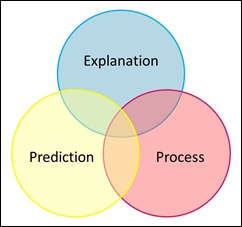It’s time to come clean: I started my career as a Theoretical Physicist. And, for all the changes of direction in my life (I’m on the third at the moment), I always will consider that as the core of my identity.
 So, not surprisingly, my hero is Albert Einstein. A bit of a cliché, I know, but he did overthrow our entire perception of the universe and, in just one year, solved three of the biggest puzzles facing science at the start of the twentieth century. Incidentally, he was awarded the Nobel Prize for arguably the least well-known, most narrow of these (Brownian Motion) – the other two (Quantum Mechanics and Relativity) being seen as too radical.
So, not surprisingly, my hero is Albert Einstein. A bit of a cliché, I know, but he did overthrow our entire perception of the universe and, in just one year, solved three of the biggest puzzles facing science at the start of the twentieth century. Incidentally, he was awarded the Nobel Prize for arguably the least well-known, most narrow of these (Brownian Motion) – the other two (Quantum Mechanics and Relativity) being seen as too radical.
Anyway, one of my favourite bloggers (Glen Alleman – Herding Cats – a serious and heavy project management blog) cited this quote of Einstein’s:
‘It can scarcely be denied that the supreme goal of all theory is to make the irreducible basic elements as simple and as few as possible without having to surrender the adequate representation of a single datum of experience.’
Synchronicity or Coincidence?
This came a couple of days after a reader of this blog, Resli Costabell, suggested:
‘I’d love a blog about how to come up with models. I have all sorts of beliefs and insights and techniques, but I’m not great at translating those into nice simple models that people can mentally grab onto.’
A Blog about how to come up with models … No
My problem is how to fit such a big topic into one blog – especially as I wittered on for three paragraphs about Einstein. So this will be the first of a series of blogs, with other topics in between, so it doesn’t get too geeky.
Classification of Models
To help us in discovering how to create a model, I think it’s helpful to start by classifying models – a model of models, if you like. There are many ways we can do this and, as you’d expect, a model or two might be called for!
So this first model is a model of the different purposes for which models are created and used. There are three principal* purposes for a model.
- Explanation
Models of ‘what is’ address our need for understanding
- Prediction
Models of ‘what will happen’ address our need for certainty
- Process
Models of ‘how to’ address our need for control
 We can illustrate these with a Venn Diagram – overlapping circles. This makes our model less rigid, by accepting that a model can simultaneously fulfil two – or even all three – of these purposes.
We can illustrate these with a Venn Diagram – overlapping circles. This makes our model less rigid, by accepting that a model can simultaneously fulfil two – or even all three – of these purposes.
We could plot each model that we have into one of the three circles and, if it fulfils two or more criteria, it will sit in an overlap.
What Mathematicians Know
What mathematicians know is that a model that does not fulfil any of these purposes will sit in the area outside of all the circles.
* Remember the emphasis on the word principal above. Is it conceivable that a model could fulfil a different purpose? Yes, of course it is. I can’t think of anything significant, so I have kept my model as simple as I can. If you build a model too complex, it hard to apply. If you build one that is too simple, it is useless.
The Art of model Building
… is to walk that fine line. So I will give the last word to Albert Einstein again. The quote at the top of this blog is often itself simplified to:
‘Everything should be made as simple as possible,
but no simpler.’
Ten Recent Pocketblogs about Models
- The CECA Loop
- Management and Leadership
- Spiral Dynamics
- Mehrabian and the Feedback Sandwich
- Equity Theory
- Social Networks
- Six Category Intervention Analysis
- Mediation
- Logical Levels of Change
- Thomas Kilmann Conflict Modes
Management Pocketbooks you might enjoy
As a lover of models, here are some of my favourite Management Pocketbooks:
![]()
![]()
![]()
![]()
![]()
![]()
![]()
![]()
![]()
![]()
![]()
![]()

 So, not surprisingly, my hero is Albert Einstein. A bit of a cliché, I know, but he did overthrow our entire perception of the universe and, in just one year, solved three of the biggest puzzles facing science at the start of the twentieth century. Incidentally, he was awarded the Nobel Prize for arguably the least well-known, most narrow of these (Brownian Motion) – the other two (Quantum Mechanics and Relativity) being seen as too radical.
So, not surprisingly, my hero is Albert Einstein. A bit of a cliché, I know, but he did overthrow our entire perception of the universe and, in just one year, solved three of the biggest puzzles facing science at the start of the twentieth century. Incidentally, he was awarded the Nobel Prize for arguably the least well-known, most narrow of these (Brownian Motion) – the other two (Quantum Mechanics and Relativity) being seen as too radical.